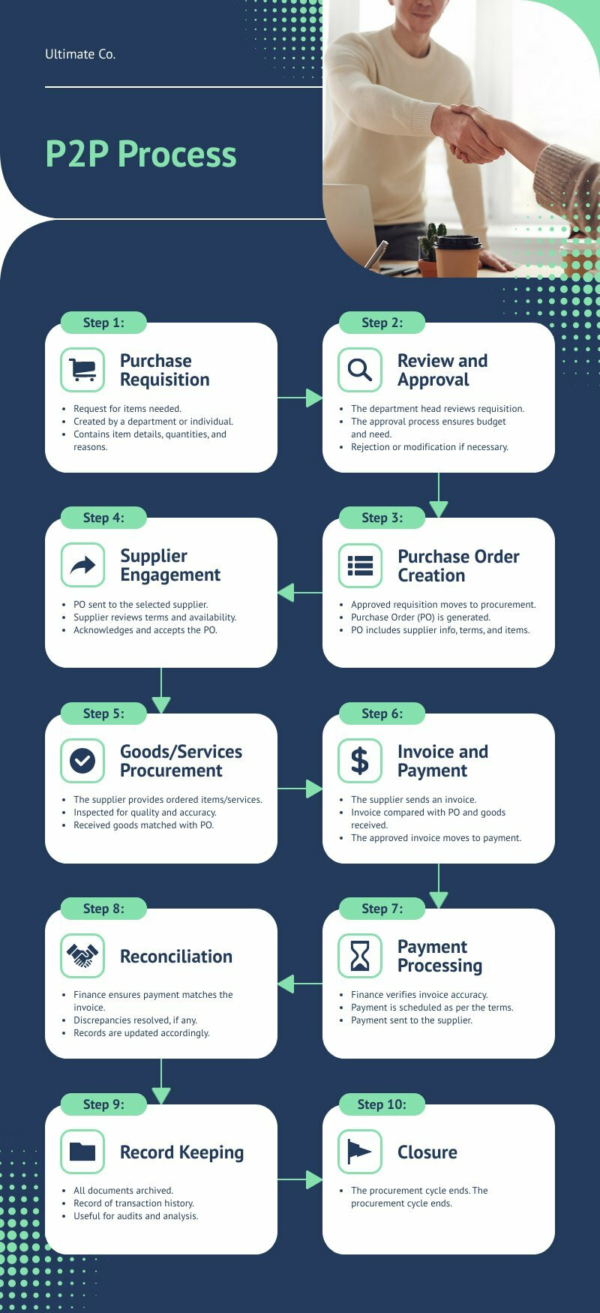
P2P Process
Diagrams
Edit for freeYou'll be asked to log in or sign up for a free Piktochart account first.
The Procure-to-Pay (P2P) process is the backbone of efficient procurement and payment operations in the business world. It's a streamlined approach encompassing everything from requisitioning goods or services to making supplier payments. In simpler terms, it's how a company buys and pays for what it needs to operate. The P2P process typically follows a series of steps. It starts with a purchase requisition, where someone within the company identifies the need for a product or service. This requisition is approved, ensuring purchases align with the budget and company policies. Once approved, a purchase order (PO) is created and sent to the supplier. The PO is a formal request for the goods or services, outlining quantity, price, and delivery dates. Upon receiving the PO, the supplier fulfills the order and sends an invoice matching the PO's terms. With the invoice in hand, the company initiates the payment process. This can involve a series of approvals to ensure accuracy and compliance with financial guidelines. Once approved, the payment is made to the supplier, typically through electronic means. The benefits of the P2P process are numerous. It enhances control over company spending by providing clear visibility into procurement activities. It also streamlines operations, reducing manual tasks and the risk of errors. Furthermore, it improves supplier relationships by ensuring prompt and accurate payments. In conclusion, the P2P process is essential to efficient business operations. It simplifies the complex task of procuring goods and services while maintaining financial control and accountability. Mastering the P2P process is key to achieving operational excellence, whether in a small business or a large corporation.
Available File Type
Customization
100% customizable
Tags
More Templates Like This
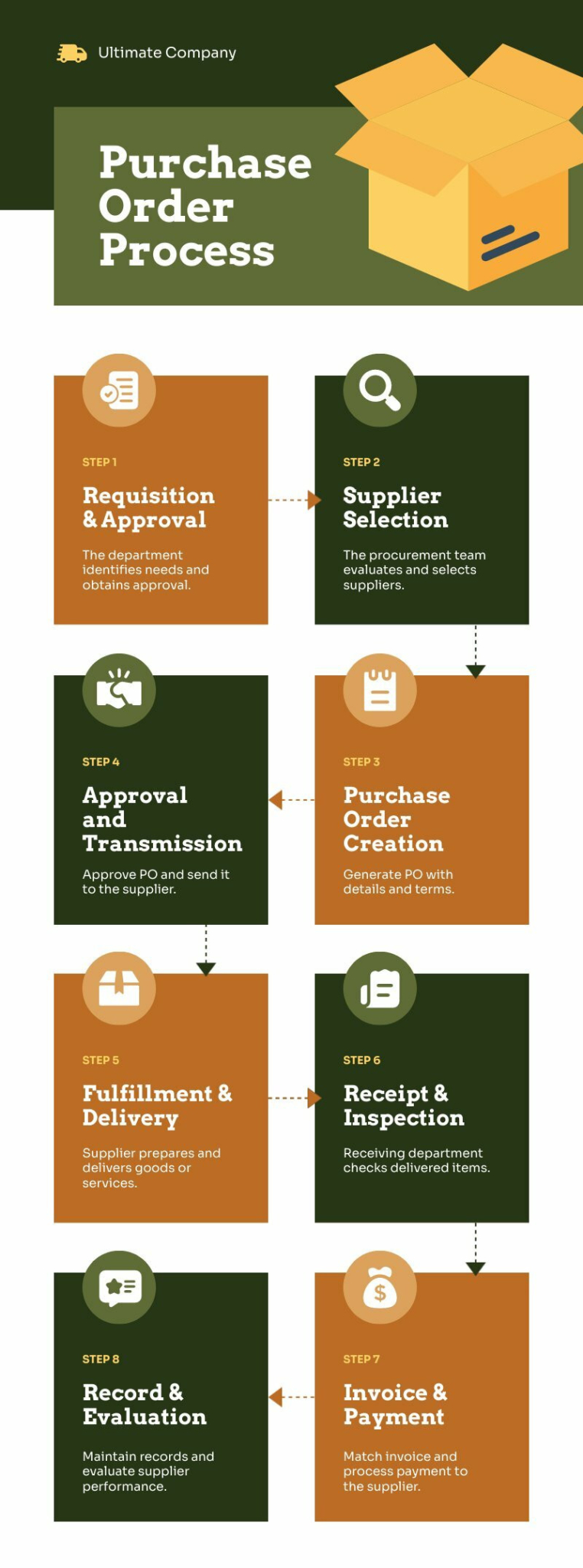 Diagrams
Purchasing Cycle
Diagrams
Purchasing Cycle
 Diagrams
Insurance and Claim Process
Diagrams
Insurance and Claim Process
 Diagrams
Claim Process
Diagrams
Claim Process
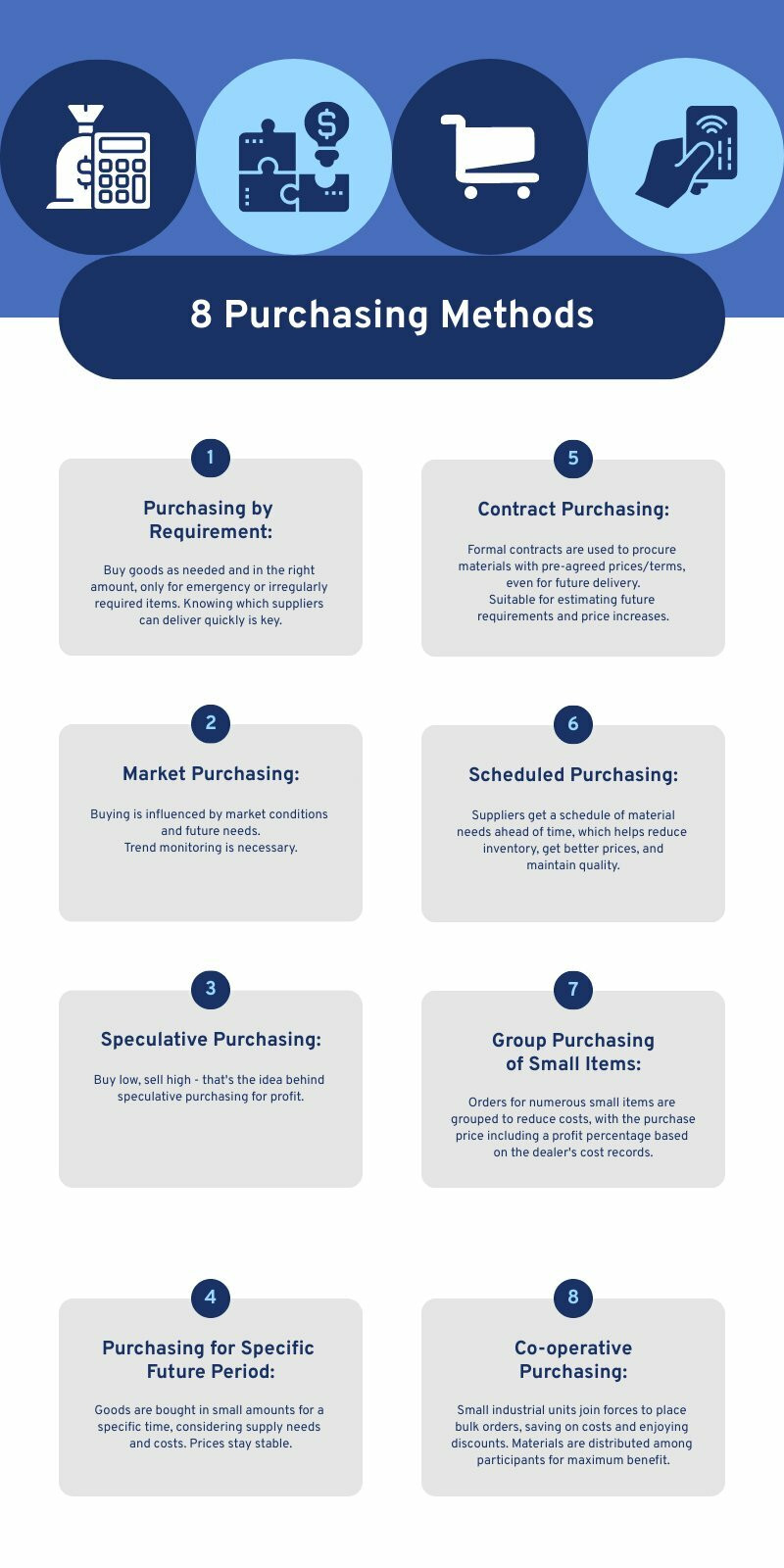 Diagrams
Purchasing Method
Diagrams
Purchasing Method
 Diagrams
Compensation and Benefits
Diagrams
Compensation and Benefits
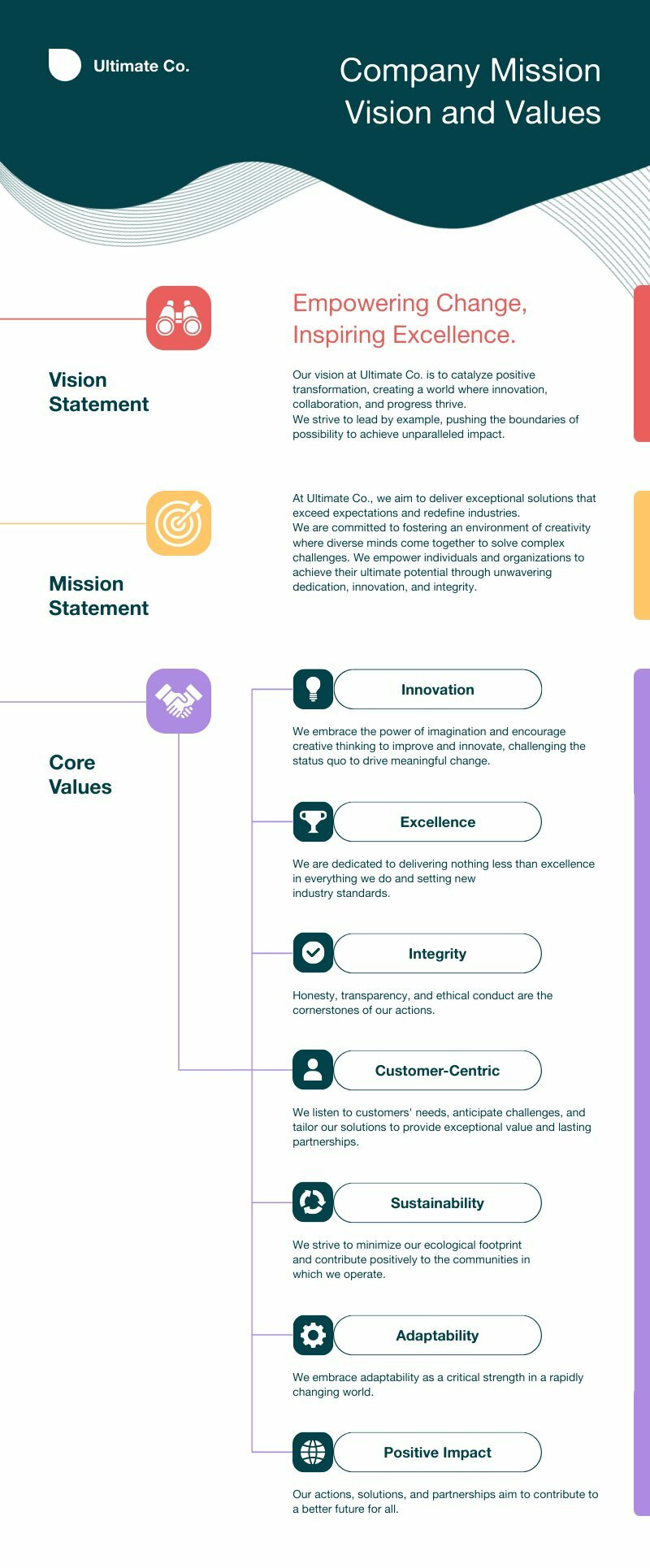 Diagrams
Corporate Values
Diagrams
Corporate Values
 Diagrams
Procurement Cycle
Diagrams
Procurement Cycle
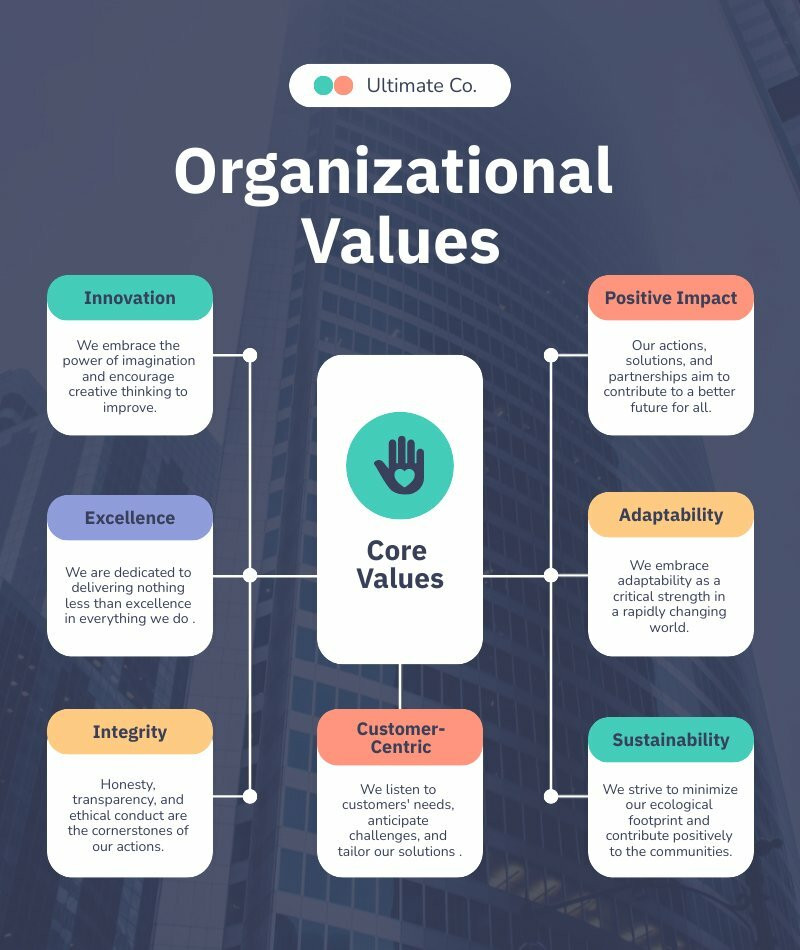 Diagrams
Organizational Values
Diagrams
Organizational Values
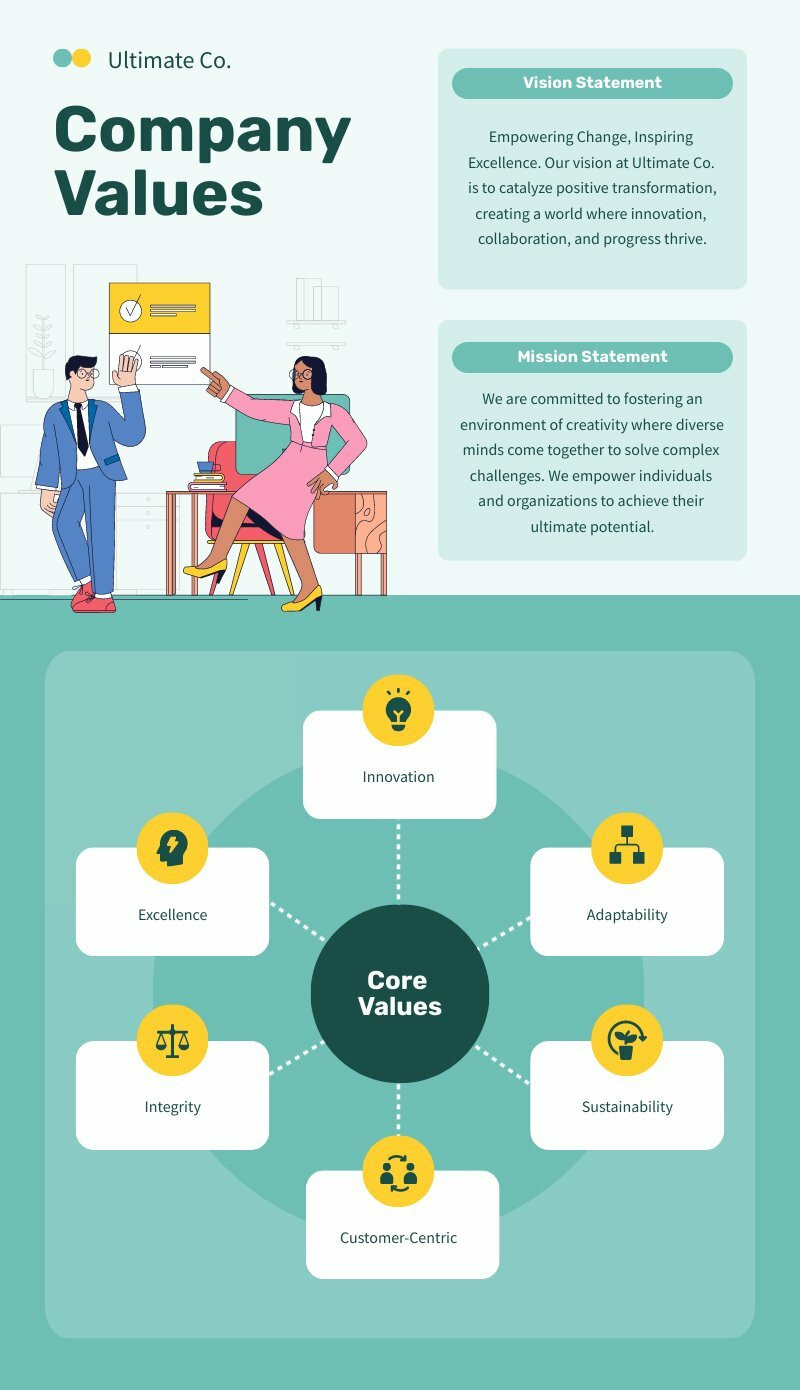 Diagrams
Company Value
Diagrams
Company Value
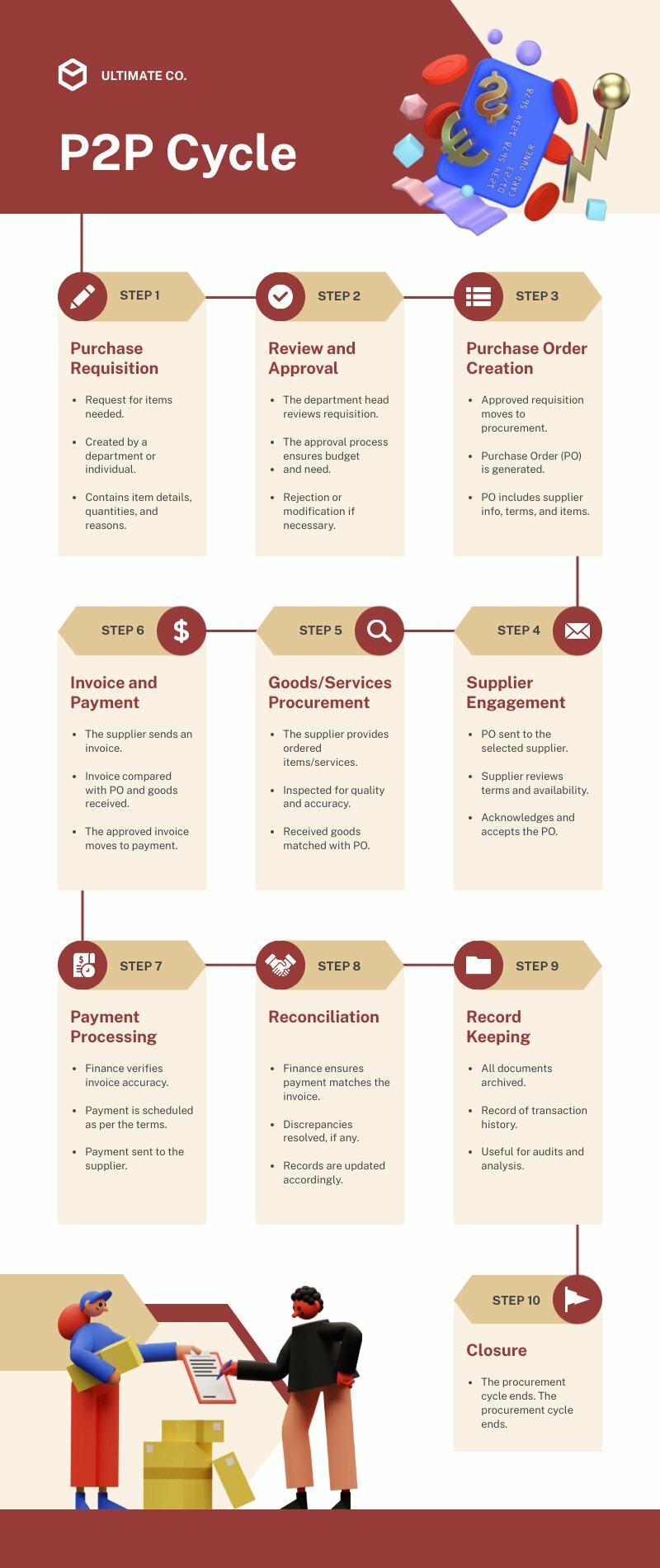 Diagrams
P2P Cycle
Diagrams
P2P Cycle
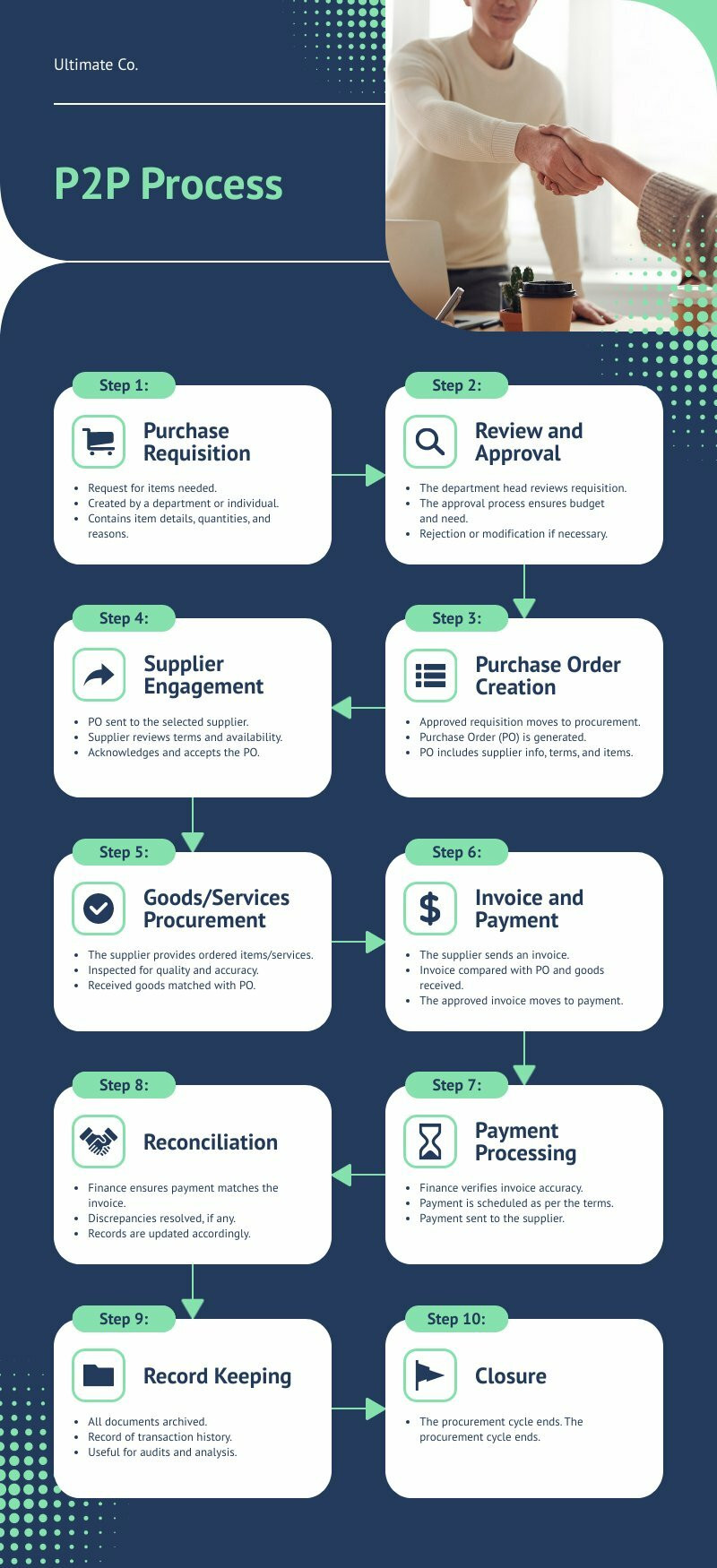 Diagrams
P2P Process
Diagrams
P2P Process
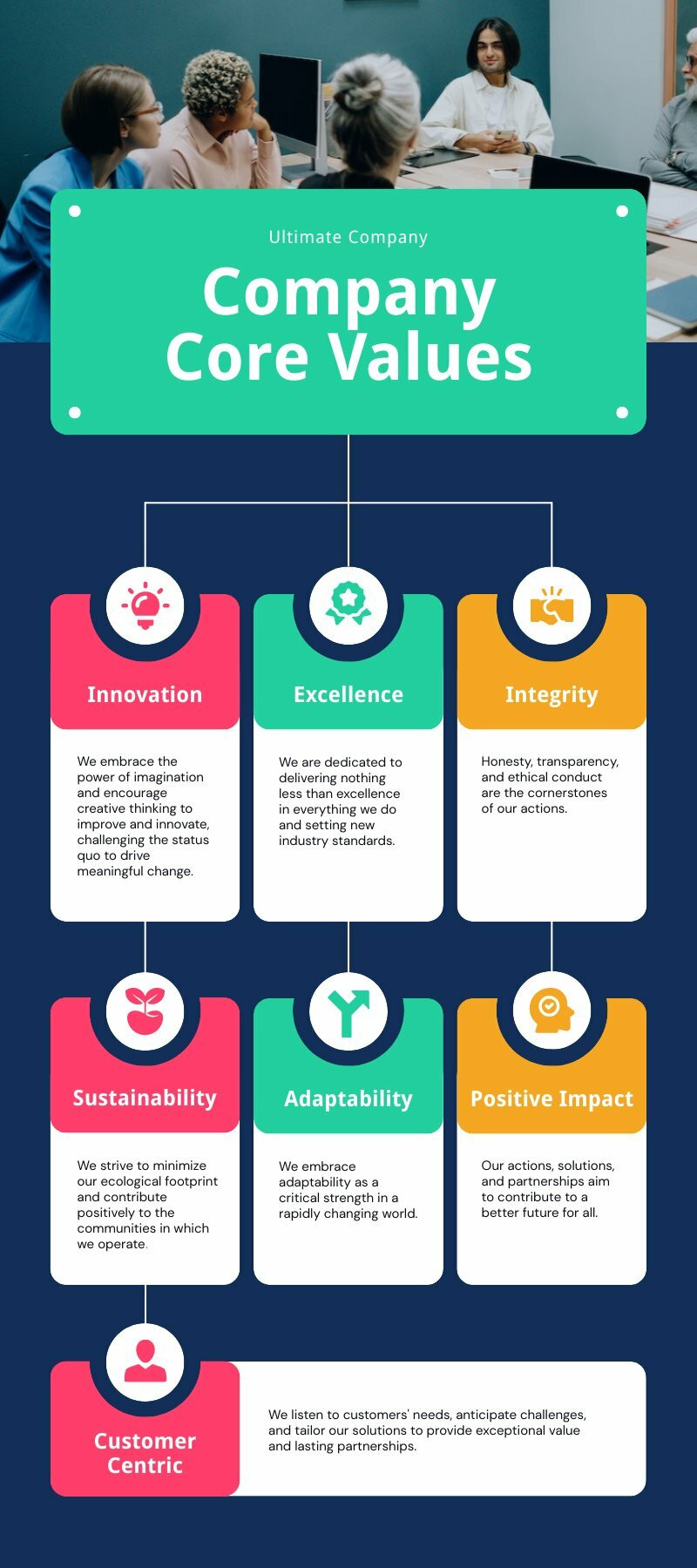 Diagrams
Core Values of a Company
Diagrams
Core Values of a Company